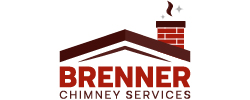The Majority of Chimney Fires Go Undetected
Slow-burning chimney fires don’t get enough air or have fuel to be dramatic or visible and they often go undetected until a later chimney inspection, but, the temperatures they reach are very high and can cause as much damage to the chimney structure – and nearby combustible parts of the house – as their more spectacular cousins.
Slow-burning chimney fires don’t get enough air or have fuel to be dramatic or visible and they often go undetected until a later chimney inspection, but, the temperatures they reach are very high and can cause as much damage to the chimney structure – and nearby combustible parts of the house – as their more spectacular cousins.
Creosote & Chimney Fires: What You Must Know
Fireplaces and wood stoves are designed to safely contain wood-fuel fires, while providing heat for a home. The chimneys that serve them have the job of expelling the by-products of combustion – the substances produced when wood burns. These include smoke, water vapor, gases, unburned wood particles, hydrocarbon, tar fog and assorted minerals. As these substances exit the fireplace or wood stove, and flow up into the relatively cooler chimney, condensation occurs. The resulting residue that sticks to the inner walls of the chimney is called creosote. Creosote is a black or brown residue that can be crusty and flaky…tar-like, drippy and sticky…or shiny and hardened. All forms are highly combustible. If it builds up in sufficient quantities – and the internal flue temperature is high enough – the result could be a chimney fire.
Fireplaces and wood stoves are designed to safely contain wood-fuel fires, while providing heat for a home. The chimneys that serve them have the job of expelling the by-products of combustion – the substances produced when wood burns. These include smoke, water vapor, gases, unburned wood particles, hydrocarbon, tar fog and assorted minerals. As these substances exit the fireplace or wood stove, and flow up into the relatively cooler chimney, condensation occurs. The resulting residue that sticks to the inner walls of the chimney is called creosote. Creosote is a black or brown residue that can be crusty and flaky…tar-like, drippy and sticky…or shiny and hardened. All forms are highly combustible. If it builds up in sufficient quantities – and the internal flue temperature is high enough – the result could be a chimney fire.
Ask for Quotes. Finally, once you have a list of potential candidates, ask them if they are State Certified, so you can compare notes. Replacing an entire chimney system is a big job and a significant investment, so it is crucial that you find the right contractor for the job!
